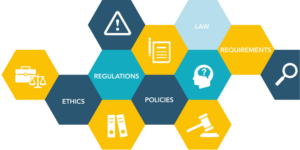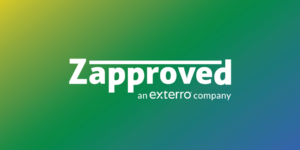
You probably hear “ediscovery costs are increasing!” fairly often in the corporate ediscovery world. Certainly there’s nothing especially surprising about that statement anymore; as the amount of data we each generate at work skyrockets, it makes sense that the spend needed to manage, process, and review it will also increase.
The reason this statement is so persistent, though, is that many legal teams are still grappling with what to do about it. For some, it can be difficult to prioritize cost savings when so many teams are being asked to do more with less each year. For others, the prospect of switching from expensive-but-familiar methods to something new can sound overwhelming.
Statistic: The average person generates 0.77 GB of data per day.
Ben Walker, “Every Day Big Data Statistics-2.5 Quintillion Bytes of Data Created Daily”.
However, for organizations who are tasked with reducing legal spend, in-house ediscovery software will drive the most savings. Many companies still outsource the majority–if not all–of their data processing and review to service providers. This is a great place to focus cost-saving initiatives for maximum impact to the bottom line.
Areas of Immediate Cost-Reduction Impact
Instead of thinking about in-house ediscovery as an all-or-nothing choice, we believe that ediscovery software is a critical piece of your overall litigation management process. It should allow you to handle more ediscovery with your current team, without proclaiming to be a replacement for your outside counsel.
Outside counsel is another critical piece, and should be used when a higher risk, highly complex matter arises, such as a Class Action suit. It’s fair to say no one wants to wrangle that scenario without outside support! But even when outside counsel is involved, you can still take steps to process data, cull down unrelated information, or run a simple review to simply send them less data. Less data = lower bills.
Another option for reducing costs is around routine work for those standard matters and needs that consistently pop up, like internal investigations, subpoena responses, and Early Case Assessment (ECA). By keeping the data processing and review in-house, you can drive cost savings and expedite the process, so no more waiting on an external provider!
Cost-Savings Across Corporate Ediscovery
Getting better control over your legal spend is bigger than simply solving for processing and review. The journey begins with taking stock of where you are today. Here are some strategic areas to consider when approaching a cost-reduction initiative. If you are interested in the full checklist, download it here.
Step 1: Map Your Data
Capture all the places or potential places discoverable data exists in your organization. Data “maps” do not need to be complicated technical diagrams, but are instead typically in a spreadsheet or table format.
Step 2: Create a Litigation Response Plan
Customize your plan around your organization’s unique needs and include components like a mission statement for how your organization handles ediscovery, any team(s) involved and contacts, and your data map, ESI protocols and templates.
Step 3: Govern Your Information
Document, document, document! Record how your company controls and organizes the mountains of data it generates.
Step 4: Execute with Consistency
Standardize preservation and collection workflows with legal hold notification templates and clear custodian instructions, and cull and review data to identify relevant information efficiently and reduce costs if using an outside vendor.
Step 5: Expand Beyond Ediscovery
The tools and tactics in your playbook can be equally useful for other scenarios like regulatory inquiries, subpoena and record requests, internal investigations, and cybersecurity incidents, privacy audits and data access requests, due diligence for mergers, acquisitions, and even divestitures.




